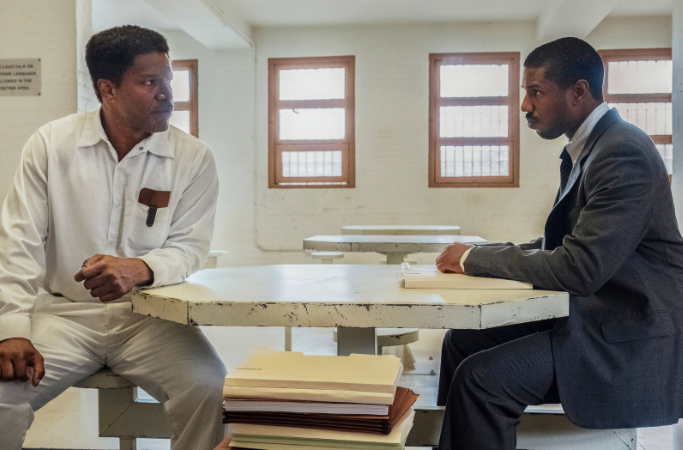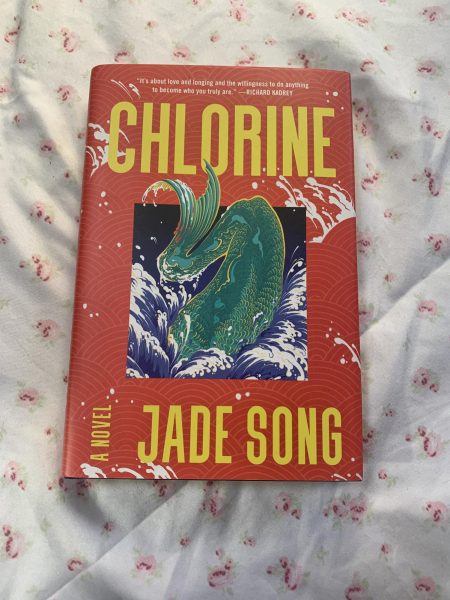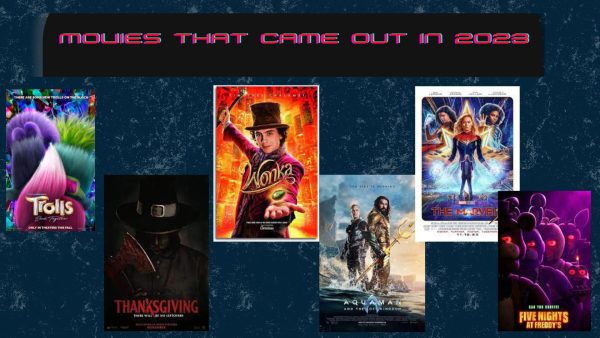Just Mercy hits home
Two actors in Just Mercy have a serious discussion.
Just Mercy is a newly released movie based on lawyer Bryan Stevenson’s memoir of the same title. In both formats, Stevenson’s main job is to save Walter McMillian, an innocent man convicted of murder and put on death row. The evidence? Lies upheld by bigotry. Though any outsider could easily point out the holes in McMillian’s conviction, he remains imprisoned. The situation is hopeless, and it’s up to Stevenson to give McMillian the just trial he deserves.
From a technical standpoint, the movie is stunning. The lighting, the camera shots, and the dialogue combine to make Just Mercy a heart-wrenching movie in the best way possible.
While there were ample opportunities for the dialogue to be dumbed down or to explain the obvious, it never happens. Instead, the dialogue adds to the audience’s knowledge, showing the depth of even minor characters. It’s a breath of fresh air to see an adaptation film take such care in translating its source material.
Even with the heavy topics and themes, the movie includes scattered comedy. Normally, such moments are distracting. But here, they add to the complexity of the movie and show the characters’ humanity. Though their lives are difficult, they still have a sense of humor.
In most movies, during dramatic or uncomfortable scenes, quiet, eerie music plays in the background. But when that music disappears, the tension surfaces. One scene, where Stevenson is forced into an unnecessary strip-search, is quiet: There’s no talking or music, exposing the character’s defiance and returning the audience’s attention to the fact that the events they are watching are real. The silence, while uncomfortable, promotes the message of the movie.
While the movie cannot include everything in the book, the execution of powerful scenes conjures more emotion than can be put into words.
In the book, the main story was Walter McMillian’s case—in which he was wrongly convicted of the murder of a young white woman—with alternating stories and cases from other parts of Stevenson’s life. But the movie focuses on McMillian, with the development of the Equal Justice Initiative (EJI) thrown into the mix. None of the scenes in the movie were rushed.
Many BHS students first hear of Bryan Stevenson and EJI through the AP Lang summer assignment: to annotate the book while searching for rhetorical devices. Showing the movie will give students an opportunity to examine how arguments can be structured in movies and how they compare to the book.
With a score of 89% on Rotten Tomatoes, Just Mercy is undeniably a high-quality movie. Even as a standalone, it accurately depicts the emotional trials of each of the characters and the atmosphere—political or otherwise—of the time, leaving little room for romanticizing. Just Mercy is far from boring. It is a thrilling and impactful movie leaving the audience questioning not only the American justice system, but the character of humanity.

Anouk is a senior who writes and edits articles, takes the occasional photo, and helps everything run in the background.

Melody is a senior at Beaverton High School who edits and writes opinion pieces about the school. She also enjoys both watching and performing in theater...

Natalie Foote is a sophomore at Beaverton High School who writes articles for The Hummer and helps manage its social media platforms. She enjoys running...


!["About The Weather" was released in 2023 as the first album by Portland emo band, Mauve. [About The Weather Album Cover]](https://beavertonhummer.com/wp-content/uploads/2024/05/AboutTheWeather.jpg)



